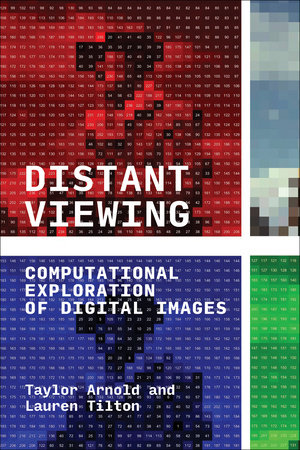
Distant Viewing
Computational Exploration of Digital Images
Taylor Arnold and Lauren Tilton
Ebook
October 17, 2023 | ISBN 9780262375177
AmazonApple BooksBarnes & NobleBooks A MillionGoogle Play StoreKobo
Paperback
October 17, 2023 | ISBN 9780262546133
AmazonBarnes & NobleBooks A MillionBookshop.orgHudson BooksellersPowell'sTargetWalmart
About the Book
Distant Viewing: Computational Exploration of Digital Images presents a new theory and methodology for the computational analysis of digital images, offering a lively, constructive critique of computer vision that you can actually use. What does it mean to say that computer vision “understands” visual inputs? Annotations never capture a whole image. The way digital images convey information requires what researchers Taylor Arnold and Lauren Tilton call “distant viewing”—a play on the well-known term “distant reading” from computational literary analysis.
Recognizing computer vision’s limitations, Arnold and Tilton’s spirited examination makes the technical exciting by applying distant viewing to the sitcoms Bewitched and I Dream of Jeannie, movie posters and other popular forms of advertising, and Dorothea Lange’s photography. In the tradition of visual culture studies and computer vision, Distant Viewing’s interdisciplinary perspective encompasses film and media studies, visual semiotics, and the sciences to create a playful, accessible guide for an international audience working in digital humanities, data science, media studies, and visual culture studies.


